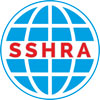
Ana Rosser-Limiñana
Department of Communication and Social Psychology, University of Alicante, Alicante, Spain
Susana A. de Juana-Espinosa
Department of Business Organization, University of Alicante, Alicante, Spain
Children of migrant and Roma origins often face situations of exclusion. As a result, their educational achievements are generally lower, while their chances of leaving compulsory education are greater. This situation entails greater risks of social marginalization, integration failure and, ultimately, poverty, which in turn has adverse effects on the social development and economic growth of the host country in the long term. The RoMigSc Project has compiled a catalog of good practices in order to show successful initiatives in the field of school inclusion of Roma and migrant children, so as to encourage mutual learning and knowledge transfer among the EU Member States of the most effective school inclusion policies relating to migrant and Roma children across Europe. To do so, an Implementation research study was conducted. It shed light, on the one hand, on a number of successful actions and programs; and on the other, on certain difficulties and solutions that brought about improvements. Therefore, this work contributes to the corpus of evidence on efficient strategies to encourage school inclusion and the lessons that can be learned.
Keywords
Europe, Good Practices, Implementation Research, Inclusive School, Migrant Children, Roma Children
Full Article is available at https://dx.doi.org/10.20319/pijss.2019.52.700711





